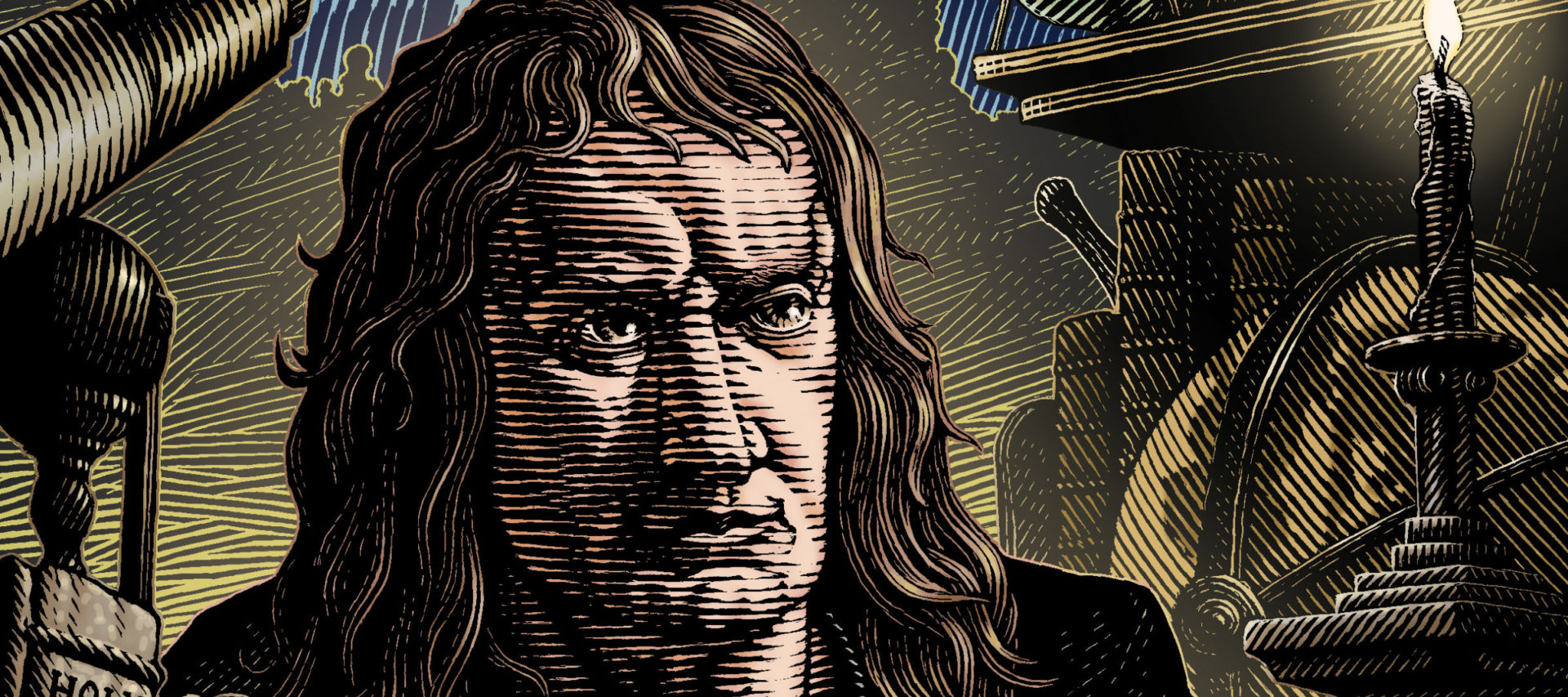Church, Heresy, and Pure Religion
Newton's unorthodox theology and his project to restore Christianity

Sir Isaac Newton (1642–1727) is one of the greatest figures in the history of science. From his laws of motion and the universal law of gravitation to his optical experiments and his calculus, Newton’s discoveries helped to usher in the era of modern science, and even today they do not cease to astound us for their elegance and insight. He is deservedly seen as one of the heroes, if not the hero, of early modern science.
Born and raised in the English countryside, Newton attended and later became a fellow and professor of mathematics at Cambridge University. His landmark scientific publications were the 1687 book Philosophiæ Naturalis Principia Mathematica (commonly shortened to Principia) and the 1704 book Opticks. For the last three decades of his long and productive life, Newton was first Warden and then Master of the Mint, helping to reform Great Britain’s currency and prosecuting counterfeiters, while at the same time, beginning in 1703, also serving as president of the world’s most important scientific organization, the Royal Society of London.
Although Newton is a familiar cultural figure — who doesn’t know the story of his encounter with the apple? — many facets of his life and thought have remained obscure. For example, while most biographical books and essays will at least mention Newton’s religious writings and his work on alchemy, they rarely offer anything but a superficial explanation of his thinking, and no real understanding of how these pursuits might have fit together with his contributions to science. Outside of scholarly circles, these important aspects of Newton’s life remain in shadow.
Indeed, until the second half of the twentieth century, even scholars had difficulty accessing Newton’s vast corpus of private writings on theology and Church history, alchemy and prophecy. Not until the late 1960s did a majority of his unpublished manuscripts become available in university libraries. Some ended up in surprising locations; it is one of the lovely quirks of history that some pages on which Newton wrote about the Apocalypse and mentioned Jerusalem today bear the stamp of the library in Jerusalem that is their institutional caretaker.
Only in the last few years have many of Newton’s writings become accessible to the general public. The scholars and staff of The Newton Project — a nonprofit organization at the University of Sussex dedicated to publishing all of Newton’s writings, online, for free — have been working since 1998 to transcribe (and sometimes translate) many shelves’ worth of Newton’s forbidding writings. The Newton Project, in collaboration with the Chymistry of Isaac Newton Project at Indiana University, the Newton Project Canada at King’s College, Halifax, the Cambridge University Digital Library, and the National Library of Israel, has thus far published over six million of Newton’s words, equivalent to about eight King James Bibles. This mammoth undertaking presents many of Newton’s writings to the public for the very first time and gives scholars around the world better access to what the Irish poet Henry Jones called Newton’s “all capacious Mind.”
The mind disclosed by these writings proves that the common image of Newton as a scientific hero is woefully incomplete. We can begin now to see the unknown Newton: a staunch but untraditional Christian, a Church historian who wrote thousands of pages of biblical interpretation, a thinker more in tune with Renaissance tradition than Enlightenment skepticism, and a scientific genius who strove with equal vigor to unlock both the principles of physical motion and the arcane secrets of alchemy.
For this symposium, we have asked five leading Newton scholars to unveil the unknown Newton:
These essays represent groundbreaking research that challenges conventional wisdom and bucks scholarly consensus. By giving us a new picture of Isaac Newton, that most intriguing and indispensable figure, they also puncture the Enlightenment understanding of modern science as necessarily antagonistic toward religion.
In quotations from Newton’s and other people’s writings throughout this symposium, original spellings have been preserved.
We owe special thanks to Stephen Snobelen for his help in commissioning these essays. This symposium was made possible by a grant from the Religion and Innovation in Human Affairs Program (RIHA) of The Historical Society. We are deeply grateful to Donald A. Yerxa and Wilfred M. McClay for their counsel and support.
Newton's unorthodox theology and his project to restore Christianity
Physics, prophecy, and the myth of Newton's clockwork universe
Reconciling natural philosophy with biblical literalism
The unpublished manuscripts and their author's changing image